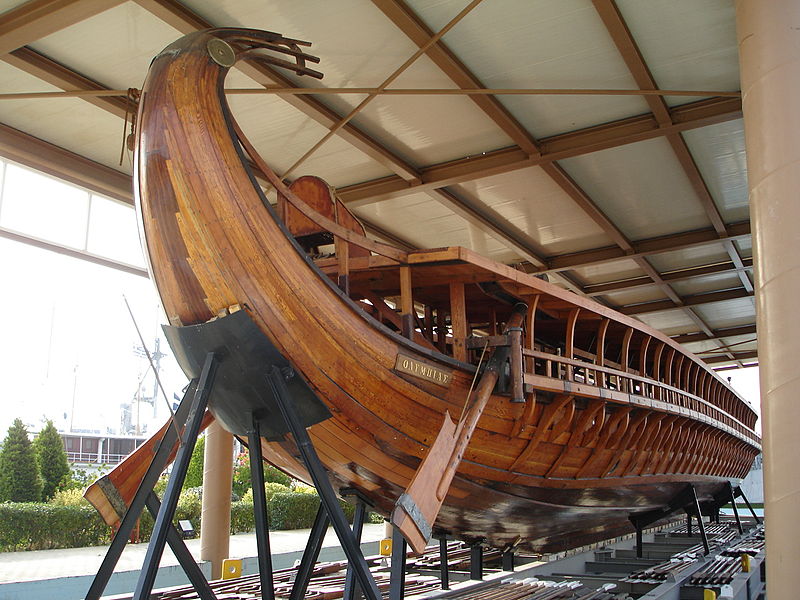The original Zvezda kit is sold as "1/72 Greek Trireme"; unfortunately, the classical trireme is the ship we probably know most about, so there is good reference and even a reconstruction to check the kit against. Major points are:
1. Scale is off. If you let a 1/72 figure "stroll" over the decks, you'll find that most of the fittings seem to be designed to 1/100 scale rather than 1/72.
2. The ship is kataphract (ie has an upper deck). That's totally wrong; classical triremes were aphract (at least in the overwhelming majority of cases) unless there were special reasons for having that upper deck (eg horse transport). As a result, the ship looks very dissimilar to the Olympias reconstruction and the available iconographic evidence.
3. The outriggers are fully enclosed, which again was very uncommon with classical triremes.
4. The hull is far too squat and lacks the sharpness the prototype has.
Here you can see both the lack of a complete upper deck and the way the outriggers looked like. That's very different to the Zvezda trireme:

Then of course they committed the cardinal sin of ship manufacturers and simply repackaged their stuff. Now, a Roman ship dating to the first decade Punic wars ("Roman trireme", easy to date as it has the boarding bridge which fell out of use during the war) was presumably quite different from a classical Greek trireme (after all, there is a time difference of around 200 years), though in all honesty we don't know a lot about these ships. The same goes for Roman imperial times - again 200 years further down the line, and even less is known with certainty about how these ships looked like.
This is all rather deplorable, as - although it has hard plastic sails - the kit is said to be well-engineered and quite buildable.
Jorit



